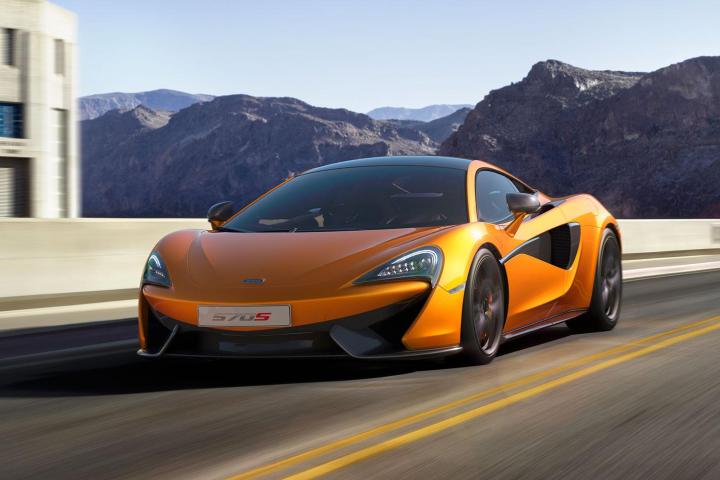
McLaren says the first 570S has already been delivered to a retailer in the U.K., but not handed over to a customer. It claims dealers are already holding over 1,000 orders globally for the new supercar. Once 570S production ramps up, McLaren will add a 540C coupe model that won’t be sold in the U.S., followed by another body style in 2016.
To hit a somewhat lower price point without compromising performance, McLaren essentially scaled down components used for the “Super Series” 650S and the P1 hybrid hypercar for the 570S. It uses a 3.8-liter, twin-turbocharged V8, which develops 562 horsepower and 443 pound-feet of torque. As with the other McLaren road cars, it’s nestled in the middle of a carbon-fiber chassis.
Sending power to the ground through a seven-speed, dual-clutch transmission, the V8 will propel the 570S from 0 to 62 mph in 3.2 seconds, 0 to 124 mph in 9.5 seconds, and on to a top speed of 204 mph. So while it may be the baby of the McLaren range, the 570S is still a bona fide supercar.
McLaren may be launching its new Sport Series with just one model, but as with the Super Series, it plans to grow it into a full model line with multiple variants. In addition to the less-powerful 540C coupe, McLaren said another body style will be offered in the near future. The company hasn’t confirmed anything, but rumor has it a convertible and “Grand Touring” fastback are both under consideration.
The 570S will play an important role in McLaren’s effort to transition from boutique carmaker to full-on Ferrari and Porsche competitor. By 2018, when the Sports Series lineup will be fully fleshed out, McLaren expects to double its annual sales volume to 4,000 cars per year.


